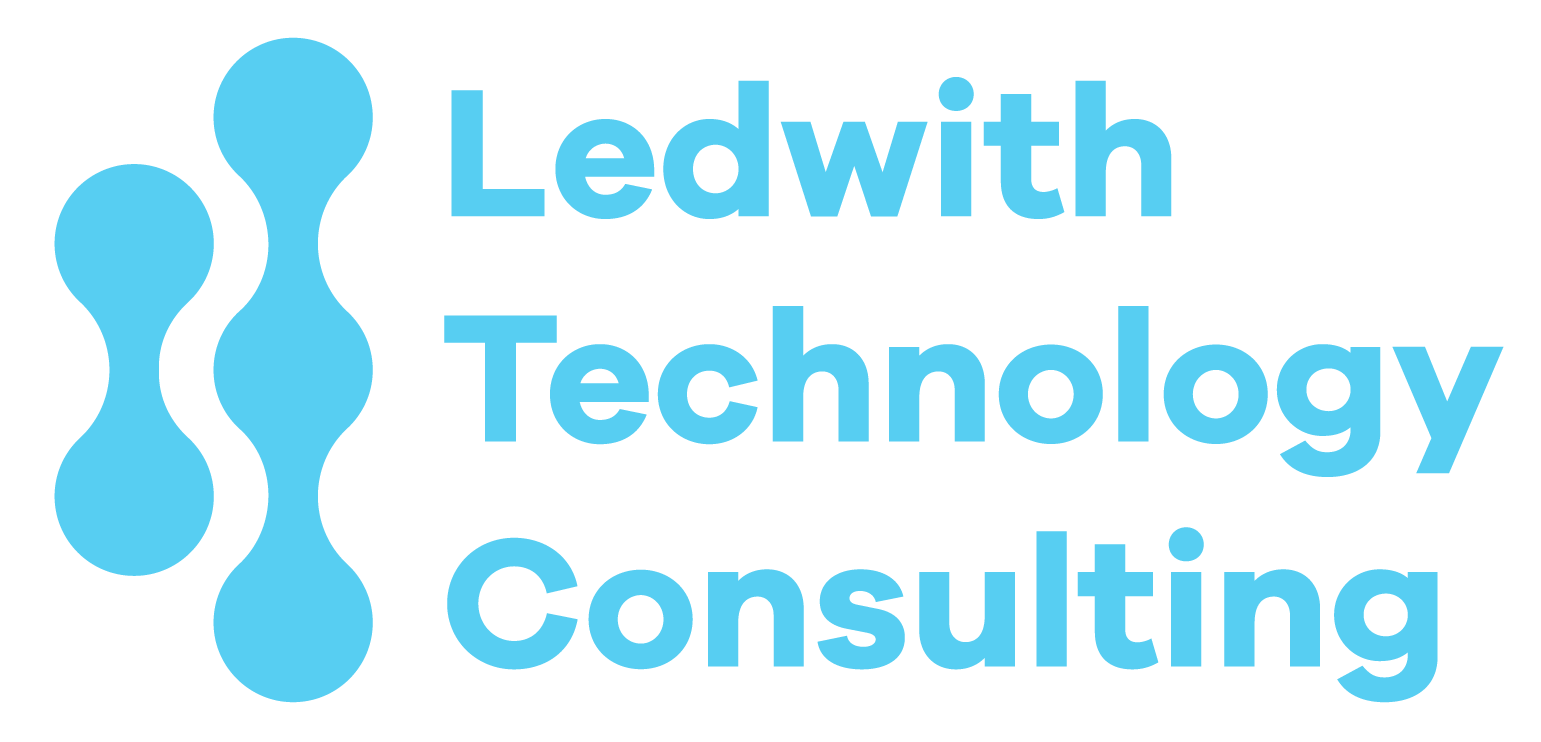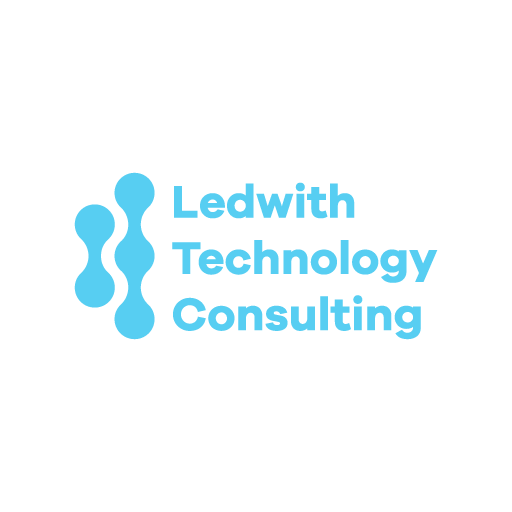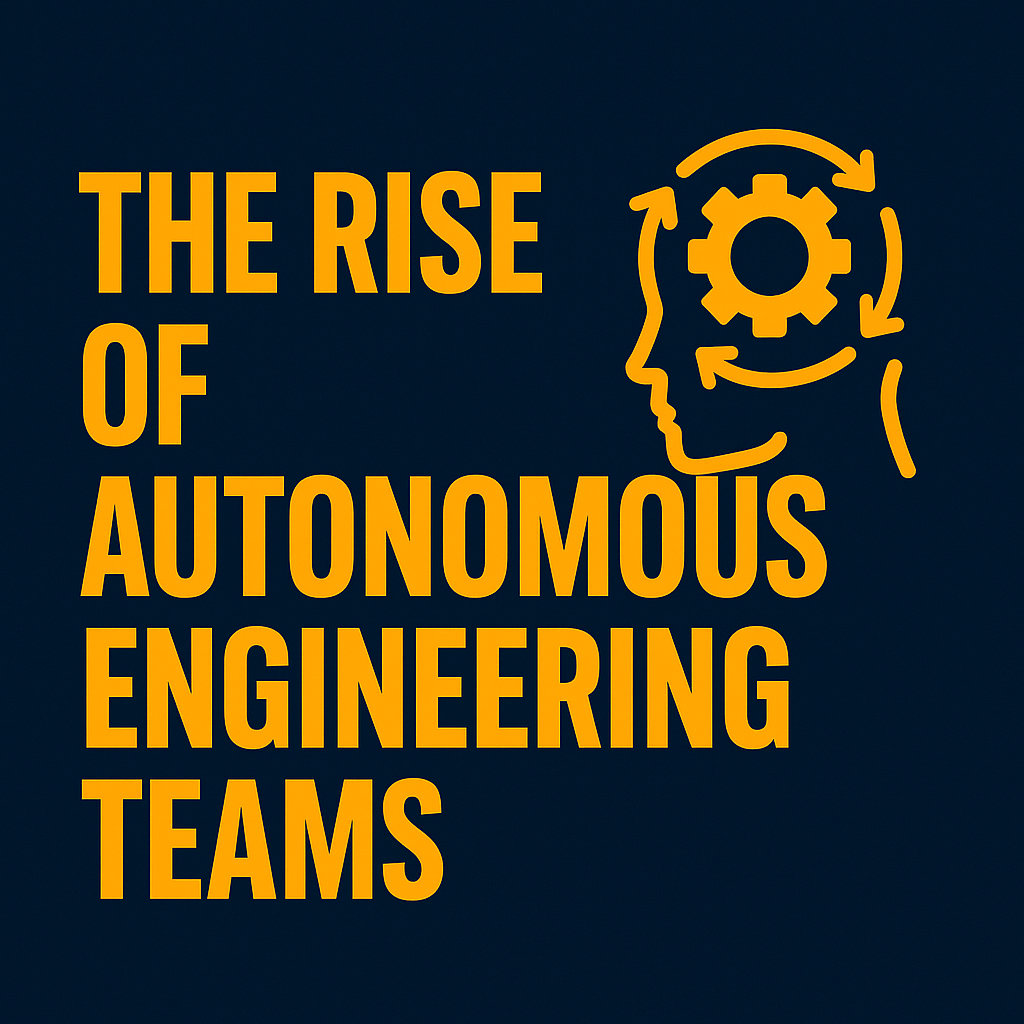By Stephen Ledwith, Tom Klump March 5, 2025
Infrastructure as Code (IaC) has moved from a buzzword to a fundamental paradigm in the modern DevOps and cloud computing era. Over my 20+ years in technology leadership—ranging from real estate tech to enterprise-scale MLS software—I’ve often seen entire teams transform how they build, maintain, and scale their systems simply by embracing IaC principles. Whenever I’m asked why Infrastructure as Code is such a game changer, my response is simple: it is the “dial” that turns manual, error-prone processes into a scalable and automated operating engine for technology teams.
In this in-depth article, we’ll explore the many facets of IaC—what it is, why it matters, the best practices you can adopt from industry leaders, and how it can integrate seamlessly into your broader organizational strategy. We’ll also highlight the tools that help facilitate Infrastructure as Code, pointing you toward the resources that can make your journey a rewarding success.
Table of Contents
- Understanding Infrastructure as Code
- Why Manual Infrastructure Management Fails
- Key Benefits of IaC
- A Personal Note on Embracing Automation
- Core Principles of IaC
- Popular IaC Tools
- Best Practices for IaC
- Common Mistakes to Avoid
- Case Studies & Success Stories
- Security & Compliance in the IaC Model
- How IaC Integrates with DevOps & CI/CD
- The Future of IaC
- Conclusion
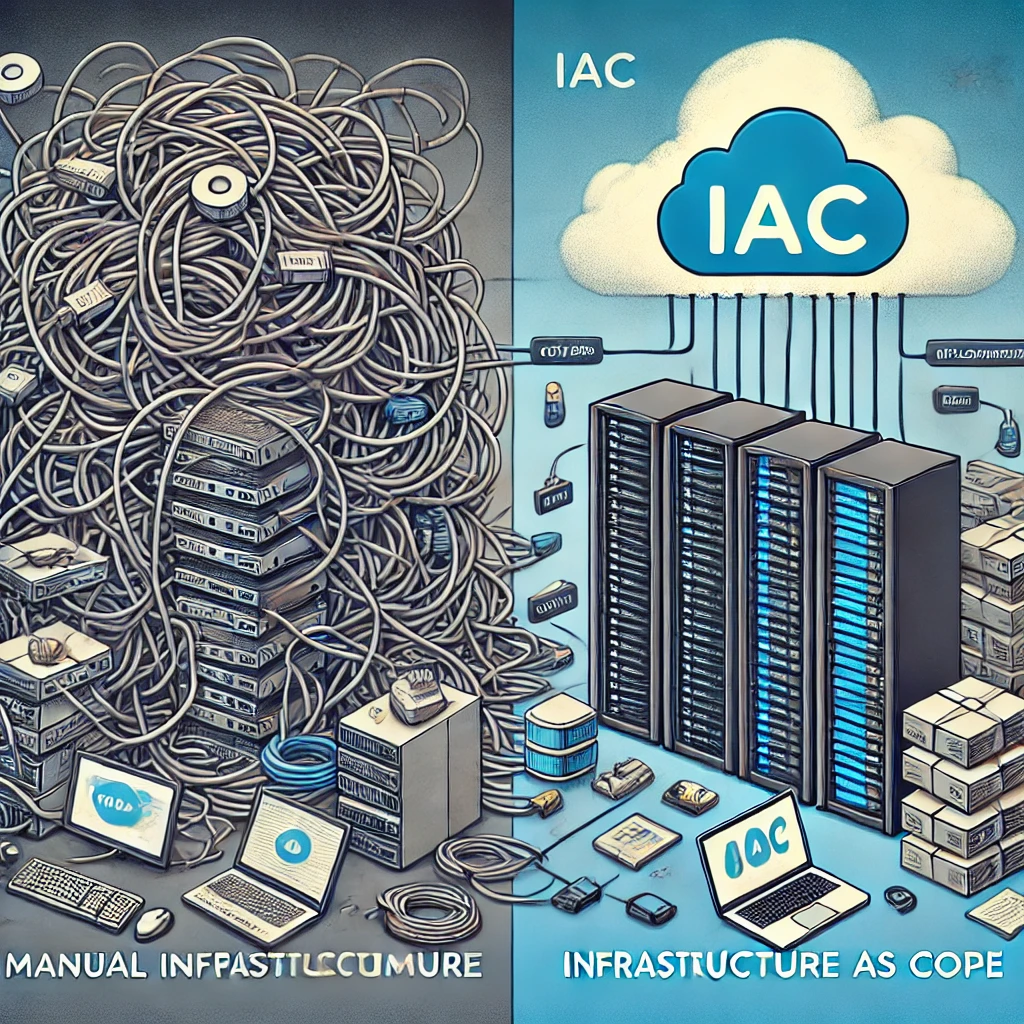
1. Understanding Infrastructure as Code
Infrastructure as Code is the process of managing and provisioning computing infrastructure—such as virtual machines, networks, load balancers, and connection topologies—through machine-readable definition files, rather than physical hardware configuration or interactive configuration tools. In layman’s terms, you write a “blueprint” or “recipe” that defines what your environment should look like, and then an IaC tool ensures it becomes reality.
The IaC model has been popularized by the rise of cloud providers like AWS, Azure, and Google Cloud—where entire data centers are virtualized and programmable. Here, you don’t physically touch servers or manually configure networking equipment; you write code that describes your desired infrastructure state, commit it to version control, and let your toolchain handle the provisioning.
A Brief Historical Context
- Manual Scripts & Configuration: Initially, systems administrators wrote custom shell scripts to set up servers. This approach was fragile; the slightest variance in environment or sequence could break the process.
- Configuration Management: Tools like Puppet, Chef, and Ansible started the shift by automating package installation and server setup. This still wasn’t full-blown IaC, but it led to consistent server builds.
- Immutable Infrastructure & IaC: The concept of immutable infrastructure—where servers and configurations are replaced rather than mutated—laid the foundation for advanced IaC approaches like Terraform and Pulumi.
Call-out: Many experts consider IaC to be the next stage in the DevOps evolution—a stage that moves beyond manual or partially scripted solutions to a fully automated ecosystem that’s version controlled and testable.
For further reading, check out the official Infrastructure as Code entry on AWS or read the introduction from Google Cloud Docs on IaC.
2. Why Manual Infrastructure Management Fails
Before diving into why IaC is such a solution, it’s helpful to understand why traditional, manual infrastructure management tends to fail—especially at scale.
Human Error
When changes are made by hand, mistakes happen. One missed step in a checklist can lead to inconsistent configurations across servers or entire environments.Lack of Version Control
Manual processes are notoriously hard to track. If someone changes a server setting, you typically find out only when something breaks or if the person documents it diligently.Time-Consuming & Non-Scalable
Launching a single environment by hand may be feasible. Launching 100 or 1,000 quickly becomes untenable. Organizations can’t keep up with demand using manual processes.Inefficiency in Testing & QA
Since these processes aren’t codified, environment replication for testing is inconsistent. Teams often face the dreaded “It works on my machine!” scenario.High Ongoing Costs
Over time, the patchwork of scripts, wiki pages, and “tribal knowledge” leads to ballooning operational expenses. Teams require more staff or time to manage environments.
When I was overseeing technology for a large real estate platform, manual processes essentially put us in “reactionary mode” every day. Instead of focusing on innovation, my teams spent hours debugging environment parity issues. That experience hammered home an important lesson: you can’t rely on heroic efforts or manual dexterity to scale your business.
3. Key Benefits of IaC
Now that we’ve identified why manual approaches falter, let’s examine the benefits of IaC. These aren’t just theoretical upsides; they are tangible improvements that companies worldwide, from startups to Fortune 500 enterprises, are experiencing every day.
Consistency & Reliability
IaC ensures each environment is provisioned identically. The code describing the infrastructure is the single source of truth. This reduces “configuration drift,” where small, manual changes accumulate over time.Faster Time to Market
With IaC, spinning up a new environment or scaling an existing one becomes as simple as running a command. This agility means faster product iterations and reduced time to customer feedback.Reduced Risk & Cost
Automated and consistent processes minimize downtime and errors. Teams can also quickly revert to a previous version of their infrastructure code if something goes wrong, reducing potential business impact.Enhanced Security & Compliance
When everything is defined in code, security and compliance checks can be automated using policy-as-code frameworks. This ensures you meet required standards (HIPAA, PCI, SOC 2, etc.) across all environments.Better Developer Experience
Developers can spin up entire test environments on demand, even for short-lived feature branches. This fosters innovation and continuous experimentation.
According to a survey by DevOps Research and Assessment (DORA) detailed in the book Accelerate by Dr. Nicole Forsgren, Jez Humble, and Gene Kim, high-performing DevOps teams (which commonly adopt IaC) have 46x more frequent code deployments and recover from incidents 96x faster.
For more insights and case studies, check out The Phoenix Project by Gene Kim, Kevin Behr, and George Spafford—a novel that exemplifies the chaos of manual processes and the salvation found in DevOps, of which IaC is a crucial component.
4. A Personal Note on Embracing Automation
Let’s take a brief personal detour. Having spent decades leading and coaching technology teams, I’ve recognized a common thread: fear of change often impedes the adoption of transformative solutions like IaC. Managers worry about losing control or introducing new complexities; engineers are sometimes anxious that code-based infrastructure is beyond their skill set.
But the reality is different. Adopting an IaC mindset typically empowers teams, from junior engineers to seasoned architects. You replace guesswork and one-off heroics with consistent, testable code. Everyone sees exactly what’s happening in the environment, and “the environment” itself becomes transparent enough to be peer-reviewed and improved—just like any other software project.
At my own blog, The Architect and The Executive, I’ve documented how aligning technology solutions with leadership strategies fosters a more collaborative, forward-thinking culture. With IaC, the conversation moves from “Did we run that script on the staging server?” to “How can we continuously improve our environment definitions in Git?”
That shift is empowering, and it allows us to focus on larger strategic goals like scaling globally or optimizing cost—rather than firefighting.
5. Core Principles of IaC
Before adopting IaC, it’s helpful to understand the guiding principles behind it. These principles ensure consistency, maintainability, and scalability:
Idempotency
You should be able to run your infrastructure code multiple times without unexpected results. Each run should converge your environment to the defined state, without partial or conflicting changes.Source Control
IaC definitions belong in Git (or an equivalent version control system). Every change is tracked, documented, and can be rolled back. This also opens the door to code reviews, peer feedback, and more robust development workflows.Modularity
Your infrastructure code should be organized into smaller, reusable components. This is especially important when you manage large, complex environments. Tools like Terraform encourage modules to group related resources.Testing & Validation
Infrastructure definitions can (and should) have tests—everything from basic syntax checks to advanced integration testing in ephemeral environments. Some teams run “dry-runs” of Terraform or Pulumi code, while others rely on advanced policy checks with tools like OPA (Open Policy Agent).Automated Lifecycle
Provisioning (deployment), updating (changes), and decommissioning (tear-down) must be automated, removing the need for manual tasks. That includes cleaning up resources, optimizing costs, or archiving logs once an environment is no longer needed.
For more advanced reading on these principles, Martin Fowler’s article “Infrastructure as Code” is an excellent resource.
6. Popular IaC Tools
Let’s look at the major players in the IaC space. Each has its own approach, ecosystem, and best-use scenarios.
6.1 Terraform
- Developer/Company: HashiCorp
- Language: HCL (HashiCorp Configuration Language)
- Key Benefit: Works across multiple cloud providers (AWS, Azure, GCP, and many more).
- Why It’s Great: Terraform is widely adopted, with a robust ecosystem of providers, modules, and a large community.
- Reference: Terraform by HashiCorp
6.2 AWS CloudFormation
- Developer/Company: Amazon Web Services
- Language: JSON or YAML
- Key Benefit: Native to AWS, deep integration with AWS services.
- Why It’s Great: CloudFormation is often the go-to for AWS-specific projects, offering stack management, rollback features, and direct integration with AWS developer tools.
- Reference: AWS CloudFormation
6.3 Azure Resource Manager (ARM) / Bicep
- Developer/Company: Microsoft
- Language: JSON (ARM), Bicep
- Key Benefit: Tight integration with Azure services and management tools.
- Why It’s Great: You get fine-grained control of Azure resources, and with Bicep, you have a more readable, modular approach to orchestrating them.
- Reference: Microsoft Bicep
6.4 Google Cloud Deployment Manager
- Developer/Company: Google
- Language: YAML, Python
- Key Benefit: Native integration with Google Cloud Platform (GCP) resources.
- Why It’s Great: Simplifies the GCP resource lifecycle management with a declared template approach.
- Reference: Google Cloud Deployment Manager
6.5 Pulumi
- Developer/Company: Pulumi Corp
- Language: General-purpose languages (TypeScript, Python, Go, C#, etc.)
- Key Benefit: Offers an infrastructure-as-software approach, letting devs code their infrastructure in languages they already use.
- Why It’s Great: Lower learning curve for developers comfortable with modern programming languages, plus multi-cloud support.
- Reference: Pulumi
6.6 Ansible, Chef, & Puppet
- Use Cases: Often used for configuration management, but can handle aspects of infrastructure provisioning.
- Key Benefit: Excellent for managing server state, installing packages, updating configurations, and ensuring compliance.
- Reference:
Call-out: “Which tool to choose?” is a frequent question. Consider your team’s expertise, your existing environment, multi-cloud requirements, and how often you plan to change or scale your infrastructure.
7. Best Practices for IaC
While every organization’s journey is unique, a few universal best practices stand out:
Use a Dedicated Repository for Infrastructure Code
Keep your application code separate from your IaC definitions. This clarity prevents confusion and ensures clean pipelines for deployment. Each repository can reference the other if needed.Implement Git Branching Strategies
Use clear branching strategies like GitFlow or Trunk-Based Development for your IaC repos. Code reviews are essential to maintain quality.Always Use a Test or Staging Environment
Test your IaC changes in a non-production environment. Tools like Terraform’splancommand let you preview changes before applying them.Leverage Automated CI/CD
Integrate IaC into your CI/CD pipelines. For instance, run a Terraform plan or Pulumi preview on every pull request, giving immediate feedback on the potential environment impact.Keep Secrets Secure
Avoid hard-coding credentials. Use solutions like HashiCorp Vault, AWS Secrets Manager, or Azure Key Vault to manage secrets securely.Modularize Your Code
Break down infrastructure into small, reusable modules (in Terraform) or components (in Pulumi). This makes code maintainable and fosters collaboration across teams.Implement Policy as Code
Tools like Open Policy Agent (OPA) or built-in policy enforcers in your cloud provider can ensure that no resource or configuration violates compliance or security standards.Continuous Monitoring & Logging
Even with automation, keep logs and monitoring in place. If a build or deployment fails, you need immediate visibility into why.
Industry Examples & References
- Netflix: Known for their advanced DevOps culture, Netflix leverages infrastructure automation extensively. Check out Netflix’s Tech Blog for in-depth devops and IaC articles.
- Google Site Reliability Engineering (SRE): Although not strictly named “IaC,” many SRE practices at Google revolve around similar codification and automation. Read about it in the official Google SRE Book.
8. Common Mistakes to Avoid
Not Versioning Infrastructure
Failing to store IaC definitions in source control defeats the entire purpose of codification. Don’t rely on local scripts or ephemeral notes.Mixing Dev & Prod Configurations
Each environment should have its own definitions—or parameter files—so that you don’t accidentally apply production changes in a development environment.Overcomplicating the Codebase
Resist the urge to over-engineer every piece of the infrastructure with complex logic. Keep things as simple as possible.Ignoring State Management
Tools like Terraform store “state” that tracks resources; mishandling or losing this state can lead to major provisioning headaches. Store it securely, often with remote backends like Amazon S3 or Terraform Cloud.Skipping Documentation
Even though the code is self-descriptive to a degree, providing a clear README, usage examples, and naming conventions for modules can help future-proof your project.No Rollback Plan
Infrastructure changes can be destructive. Ensure you have a rollback plan—like storing older versions of your code or keeping snapshots of key resources.
A typical scenario is to see novices apply a Terraform configuration without storing the state remotely. Then, on the second run from a different local machine, Terraform has no idea that resources already exist. This can lead to resource duplication and major confusion. Always configure remote state!
9. Case Studies & Success Stories
9.1 Expanding a Real Estate Platform Internationally
During one of my leadership roles, we leveraged IaC to expand a major real estate platform into multiple countries. By standardizing our environment definitions, we could replicate our infrastructure blueprint for new markets in days rather than weeks. This approach allowed us to handle local compliance differences by simply parameterizing variables related to region, currency, or data-residency rules. We scaled from a single environment to multiple international markets in record time.
9.2 Migrating to a Microservice Architecture
In a different scenario, we were forced to consider a move from a monolithic environment that was no longer supported by our hosting provider. Rather than panic, we seized the opportunity to implement microservice architecture. We used IaC (Terraform) to spin up separate microservices with Docker containers across AWS ECS clusters. Each microservice had its own Terraform module. This shift drastically improved deployment times and overall reliability. The ability to track changes in a single code repository streamlined our compliance audits and eased the conversation with upper management, who appreciated the newfound transparency.
9.3 Large FinTech Enterprise
A large FinTech organization showcased in an InfoQ article was able to cut down environment provisioning time by 70%. Their teams used Ansible for server configuration and Terraform for provisioning AWS resources. By adopting IaC, they also created ephemeral testing environments, enabling QA to replicate production data sets safely, all while keeping costs in check by spinning these environments down when not in use.
10. Security & Compliance in the IaC Model
Security concerns are often paramount, especially in highly regulated sectors like finance, healthcare, and government. IaC supports a more robust security posture by:
Drift Detection
If anyone modifies infrastructure outside of the codebase, you’ll detect the changes through a drift report or a “plan” that reveals unauthorized differences.Automated Audits
Because everything is version controlled, you have a changelog for every resource. You can see exactly who changed what and when—a boon for compliance audits (SOC 2, HIPAA, PCI DSS, etc.).Policy Enforcement
You can enforce best practices or compliance requirements as policy code. For example, you can require encryption on all storage buckets or restrict open inbound ports on security groups. Tools like Cloud Custodian help to ensure that your environment remains within compliance automatically.Secrets Management
With integrated secrets management solutions, your IaC definitions never store passwords or sensitive tokens in plain text. The code references a vault or a secure external store.
To see these ideas in action, check out official docs from HashiCorp Vault or AWS Secrets Manager. They showcase real-world best practices for injecting secrets into IaC workflows.
11. How IaC Integrates with DevOps & CI/CD
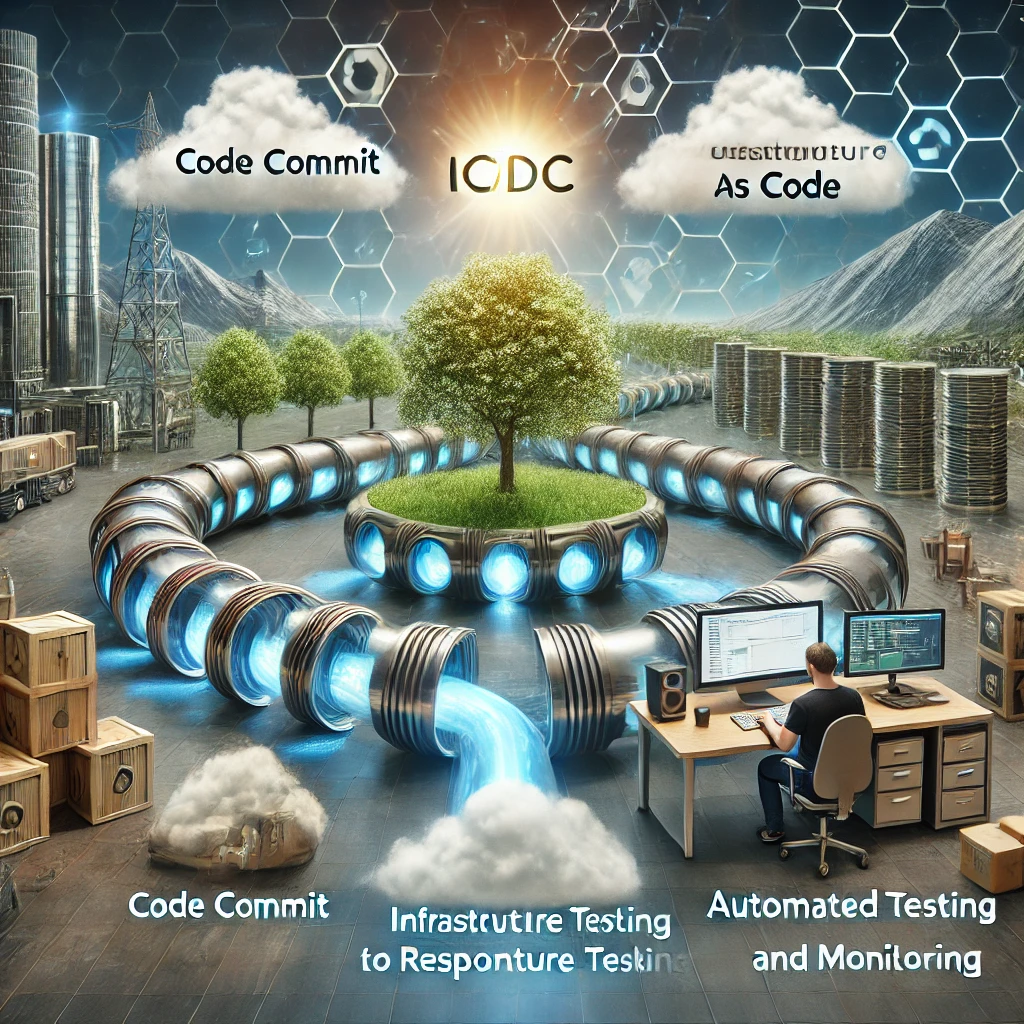
In high-performing DevOps environments, IaC is not a standalone practice but is deeply woven into the CI/CD pipelines:
Continuous Integration (CI)
- Developers push code (including IaC definitions) to a repository.
- Automated build systems (e.g., Jenkins, GitHub Actions, or GitLab CI) run syntax checks (like
terraform fmtor Pulumi’s code checks). - A “plan” is generated that outlines exactly how the environment will change.
Continuous Delivery (CD)
- If the plan is approved, the pipeline automatically applies changes to staging.
- After integration tests pass, changes are either auto-promoted to production or require a manual approval gate, depending on your release strategy.
Observability & Feedback Loops
- Systems like Prometheus, Datadog, or Amazon CloudWatch feed performance and reliability metrics back into your pipeline.
- If something breaks, you can quickly roll back to a previous version of the infrastructure code.
Call-out: “Shift-Left” Security and Observability. With IaC, you can test for vulnerabilities and performance issues earlier in the development process. This means you catch problems before they become costly production incidents.

12. The Future of IaC
Infrastructure as Code is continuously evolving. Below are a few emerging trends:
Policy as Code & Governance
Expect more organizations to adopt advanced policy frameworks, ensuring compliance and security from the moment code is written.Multi-Cloud & Edge Computing
As companies expand to multi-cloud and edge deployments, IaC tools will further abstract away differences between providers, giving you a single pane of glass to manage globally distributed infrastructure.AI-Driven Infrastructure
We can anticipate tools that intelligently optimize resource usage or placement based on AI/ML heuristics—scaling or migrating infrastructure automatically to cut costs or improve performance.IaC for Non-Cloud Environments
The idea of “infrastructure as code” is beginning to move beyond the traditional cloud data center: consider IoT, automotive, and even retail or manufacturing contexts.Higher-Level Programming Languages for IaC
Pulumi has already championed the idea of using TypeScript, Python, or Go for infrastructure. This trend will likely become even more popular, blending the lines between application development and infrastructure provisioning.
To keep up with these trends, watch open-source projects on GitHub and see how new offerings from major cloud providers evolve. Industry conferences like KubeCon and HashiConf often showcase the latest breakthroughs in automation and IaC.
13. Conclusion
Infrastructure as Code is more than just another tool in your DevOps toolkit—it’s a paradigm shift that can completely transform how your organization builds and scales software. By codifying your environments, you move from a realm of unpredictable, manual tasks to one of reliable automation, version control, and near-infinite scalability. When you combine IaC with solid DevOps practices—continuous integration, continuous delivery, policy as code, advanced monitoring—you’re setting your team up for a level of agility and resilience that was difficult to imagine only a few years ago.
From My Experience
In the roles I’ve held—whether as a hands-on developer, an engineering manager, or a vice president of technology—embracing IaC has repeatedly proven to be the turning point in conquering operational chaos. By automating the mundane and codifying best practices, we freed ourselves to tackle real innovation: building new features, exploring new markets, and delivering tangible business value.
Take the Leap
If you haven’t started your IaC journey yet, there’s no time like the present. Begin small—maybe a single Terraform or Pulumi configuration for a staging environment—and expand gradually. Integrate with your existing CI/CD pipelines, introduce code reviews and best practices, and watch as your team’s confidence and efficiency grow.
For ongoing insights and strategies, be sure to check out my blog at The Architect and The Executive, where I frequently share leadership frameworks that complement technical initiatives like IaC. With 20+ years of technology management under my belt, I know that real transformation goes beyond the code—it’s about the people, the culture, and the alignment between architecture and executive vision.
Additional Citations & Resources
- AWS Infrastructure as Code
- Google Cloud Docs on IaC
- Azure Bicep Documentation
- Terraform by HashiCorp
- Pulumi
- Chef
- Ansible
- Puppet
- The Phoenix Project by Gene Kim, Kevin Behr, and George Spafford
- Accelerate by Dr. Nicole Forsgren, Jez Humble, and Gene Kim
- Open Policy Agent (OPA)
- Cloud Custodian
- Google SRE Book
- InfoQ: Introduction to Infrastructure as Code
Thank you for reading, and here’s to automating your future, one line of code at a time!
